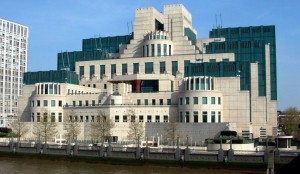MONDAY, 31 JANUARY 2011
Security service helicopters circle MI6 headquarters, armed police surround the building and all the while a small team are busy digging by the foundations. No it is not the opening scene to the new James Bond film, but London’s most significant archaeological discovery ever. A team of archaeologists from the Thames Discovery Programme, led by Gustave Milne, have found a prehistoric structure dating back to the Mesolithic period in the shadow of Britain’s Secret Intelligence Service headquarters.The team were surveying the banks of the Thames when they hit gold, or rather, timber, in Vauxhall back in spring 2010. The structure consists of six timber piles of up to 0.3m in diameter which stood by the river over 6000 years ago. In the adjacent area, Mesolithic stone tools and Neolithic pottery were also found.
This area of the Thames was very significant in centuries gone by as it is the site of the confluence of the Rivers Effra and Thames and is only 600m downstream from the Bronze Age timber-bridge that allowed crossing of the river. Given the fact that prehistoric Londoners are thought to have been a nomadic people, evidence of a permanent building suggests this place held great importance to them. Indeed, this is a rare discovery for anywhere in Britain, and a function has yet to be determined for the wooden structure.
The archaeologists who made the discovery had to keep their finding a secret, not wanting to reveal any details until they had finished their investigation. Their research is part of an English Heritage and Museum of London effort to record archaeological data on the foreshore. Their detailed study and radiocarbon dating has been published in this month’s issue of London Archaeology [1]/.
Written by Jessica Robinson

